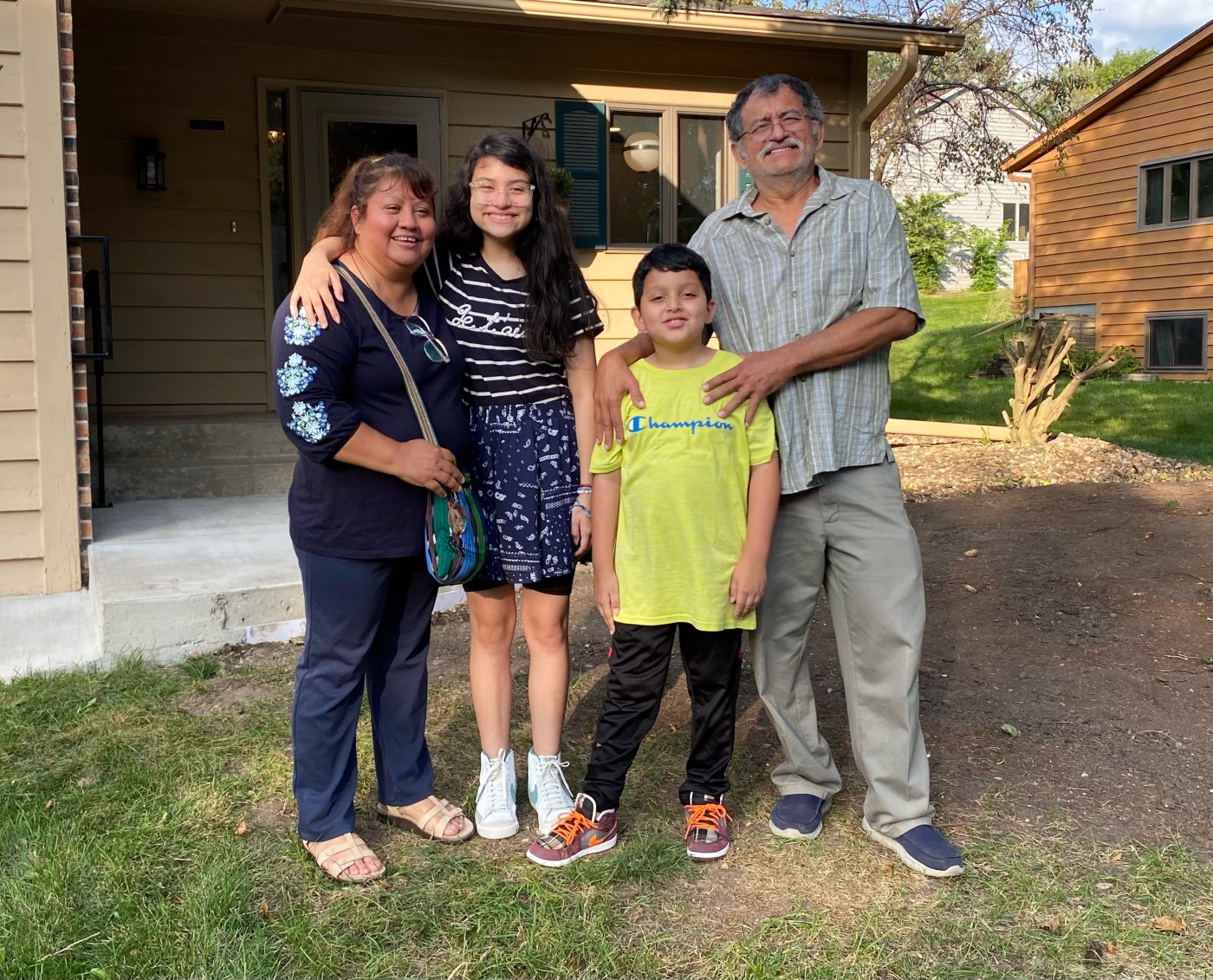For seven years, Leticia and Maynor Aldana and their two children lived in a rundown, $1,200 per month apartment in Northfield, Minn. Raw sewage from the apartment above dripped into their kitchen. The basement had standing water and mold.
Leticia immigrated here from Mexico 16 years ago. Maynor came from Guatemala 33 years ago. They’re legal residents and hard workers — she’s a seamstress, and he hangs drywall — but homeownership escaped them.
“We tried to buy a house, but didn’t have enough credit,” Maynor told me through an interpreter.
However, thanks to a compassionate couple, a caring community and their local Habitat for Humanity, the Aldanas moved into their new home on Labor Day.
Related Articles
Home decor: Hold on to the past — selectively
Wedding planning: When love is in the air, so is money $$$
Home decor: A colorful new book to help if you’re stuck in neutral
At Home: Good design keeps up with the times
At Home: Discoveries made on path to an organized home
You may recall me talking about Bob Thacker and his community’s Starfish project last year. The name comes from the parable about a boy on a starfish-strewn beach, throwing the creatures back into the ocean. When an old man asks why the boy bothers — he can’t save them all — the boy tosses another starfish into the sea and says, “Well, it matters to this one.”
“We know we can’t help every family who needs better housing, but we can help one at a time,” says Thacker, who worked alongside dozens of volunteers to renovate a dilapidated townhome — dubbed the Starfish House — for another family last year. The community effort involved buying a rundown, deserted house, asking generous local residents to pitch in, soliciting donated materials and combing curbs for castoff furniture.
The Aldanas’ new home is Starfish House 2.
The Aldanas actually have their daughter to thank for putting the new home idea in play. Leticia and Maynor were among a few paid laborers who worked on Starfish House 1. As the project was winding up, the couple’s then 12-year-old daughter asked Thacker, “Could you do a house like this for my family?”
Thacker and his wife, Karen Cherewatuk, bankrolled the first house, but “we only had so much money and insurance,” Thacker says. Then the local Habitat for Humanity offered to partner with them.
“That was huge,” Thacker said. “Habitat provided resources and the name recognition that made getting donations and contributions easier.”
Until then, this Habitat chapter had avoided restoring old homes, preferring to build new ones. But the Thackers had proven with their first project that with enough resourcefulness and passion, they could restore a rundown home for 30 to 40 percent less than the cost to build new.
They found a townhouse no one had lived in for a year. “The inside was trashed,” Thacker said. “Mud covered the floors. The walls had holes. The basement windows had stayed open all winter.” In other words, it was perfect.
Leticia and Maynor Aldana in their new kitchen. “I’ve never had such nice appliances,” she said. “Sometimes I’m afraid to turn them on.”(Photo courtesy Bob Thacker)
Habitat bought the 1,200-square-foot house last spring and gave Team Starfish a $50,000 budget to restore it. “We came in under,” Thacker says proudly.
Volunteers worked on the house all summer, but no one put in more hours than Leticia and Maynor, who worked there evenings and weekends around their day jobs.
“Having a house like this was never even a goal because it was such a far-off possibility,” Leticia says.
“This really is the American dream,” Maynor says.
Renovating a house can cost more than building a new one, but it doesn’t have to. Here’s how the Starfish team does it.
Spend sparingly: The team stretched the $50,000 restoration budget by shopping at Building Material Outlet for wood-vinyl flooring, cabinets, appliances, showers, toilets, tubs and sinks.
Spread the word: Thanks to word of mouth, more than 100 local residents volunteered to help, including framers, carpenters, plumbers, electricians, designers and master gardeners. Many donated building materials and provided labor discounts.
Seek out free stuff: “I am an inveterate dumpster diver and curb crawler,” Thacker says. Prime times include early in the morning before trash pickup and on the last and first days of the month, when people are moving.
Shop for cheap: They scoured Goodwill and garage sales and found beautiful area rugs on Facebook Marketplace. Total tab to completely furnish the home: less than $800.
Restore: The Aldanas worked alongside community members to restore and refinish much of the found furniture.
Believe: “Never underestimate the power of people,” Thacker says, “or how much they want to help.”
Leticia and Maynor will officially close on their new home this month, with house payments lower than what they now pay in rent.
Marni Jameson has written seven books, including “Downsizing the Family Home.” Reach her at marni@marnijameson.com.












